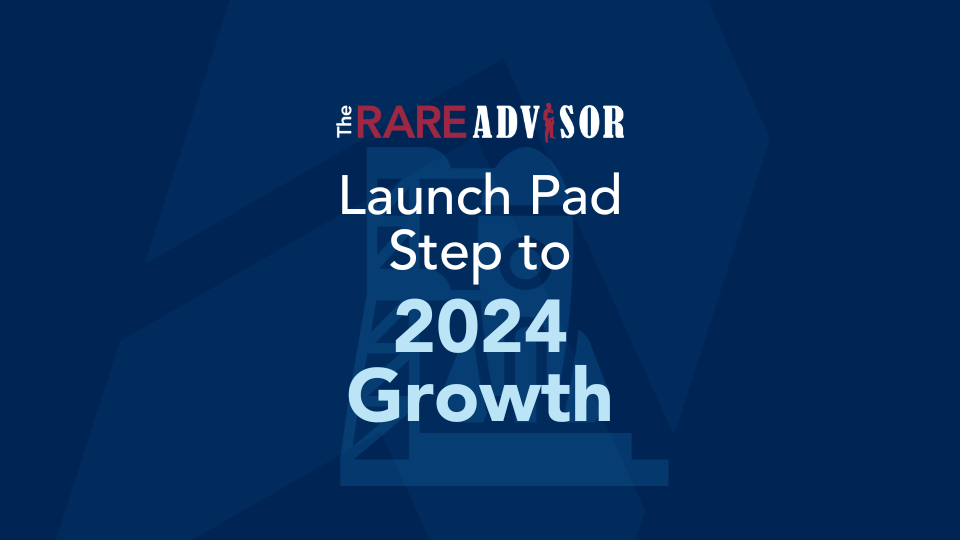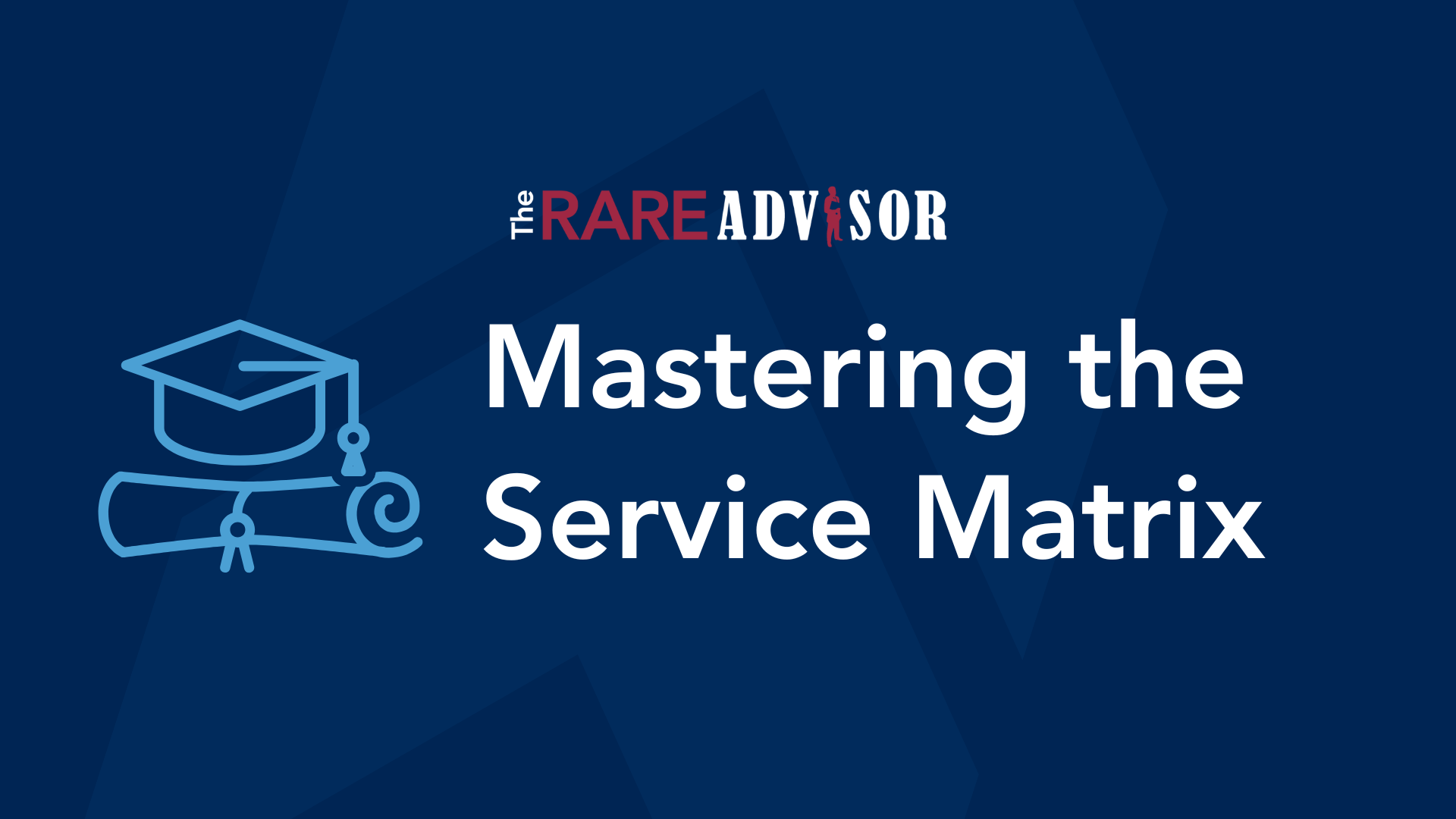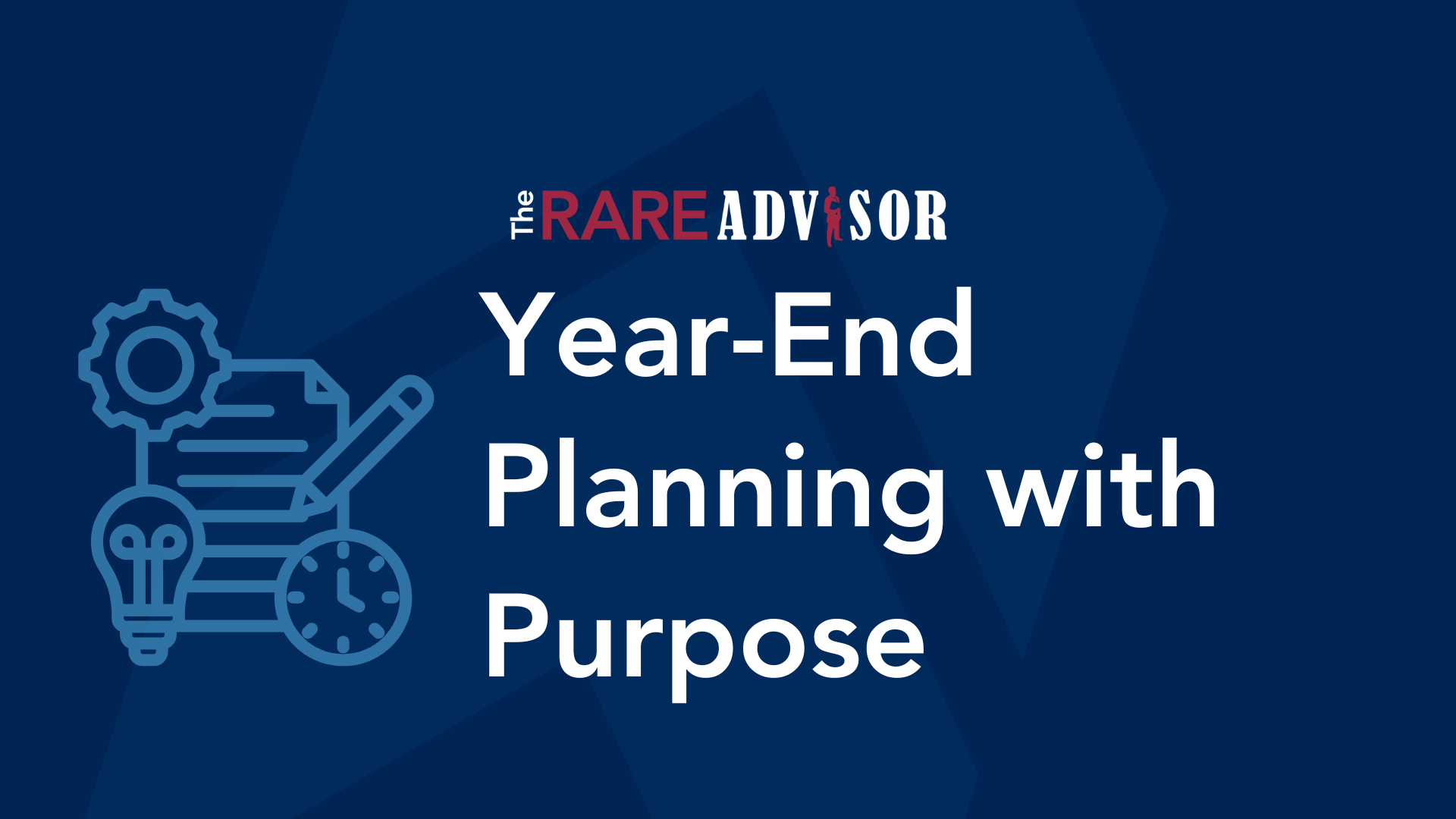The RARE Advisor: Launch Pad Step to 2024 Growth

In this episode of The RARE Advisor, I want to introduce you to what I call the ‘Step Before the Strategy’. The first step that you need to take is a really quick internal calculation within your practice that will set the stage for your 2024 growth. Let’s dive in.
It's always exciting when we start off a New Year: we're full of aspirations, have goals for the year, want to grow our practice, want to run a better business, want to treat clients right, want to gather new assets, want to create and develop better portfolios, want to increase sales, and the list goes right on down the line. But the step that comes before all of that, it is kind of the precursor to each and every one of those things I just mentioned, is a quick calculation. Really, you could argue it's two calculations that are attached at the hip. It is Total Customer Value, and Total Maven Value.
Total Customer Value is the total value of revenue driven by a particular customer over a particular period of time. If you're going to pick a single period of time (you're going to only want to calculate this one time) then I would say run it over a five year period of time. If you are going to pick multiples, I would look at a one year, a three year, and a five year period of time. But it's simply identifying what the revenue generated by that particular individual is. And I want to do this for all of my database. What's the revenue generated by those individuals over that period of time individually? Then, what I want to do next - and this is a really important part - I want to take that Total Customer Value and I want to use it to calculate Total Maven Value. Total Maven Value is the Total Customer Value plus I'm going to credit those individuals with any introductions, they gave me (referrals or introductions that lead to new business or new clients). I'm going to credit them the value of the person they introduced me to.
So, if my customer is worth $5,000 to me over five years, and they've introduced me to three other individuals who each in turn were worth $5,000 in their formula, then I'm going to create a Total Maven Value for that starting point customer of $20,000. Now, then one of those introductions that was in the maven calculation, they might become their own maven, right? Because they have their own Total Customer Value. But then they've introduced me to two or three people, and I can go right on down the line. So this is key. And the reason it is key is because you want to duplicate your best clients. You don't want to duplicate the bottom half, or even the bottom two thirds of your client base. You want to duplicate the top 5, 10, 20%, maybe a third at most of your client base, those are the people you're trying to adhere to. So by identifying, first of all, who they are and who they hang out with - that's step number one. By looking at the Maven Value, you'll very quickly determine whether or not you're any good at getting introductions (which, by the way, are lightyears beyond getting referrals - we have a whole system and a program for that if you need help with that). But it all starts with calculating the Total Customer Value, and then identifying the Total Maven Value.
And oh, by the way, last tidbit. The reason I calculate this for longer than a one year period of time is because I want to account for assets under management and recurring revenue. Because we know inside of our practice, even though on the P&L statement non-recurring revenue can be very valuable on the value of our practice, the recurring revenue is what drives the bulk of the value in the practice. So, over a five year period of time, I can get an idea of what that recurring revenue looks like. You can go any period of time you want - maybe you want to do 10, maybe you want to do lifetime. There's all kinds of ways to do it. But, I would say if you're gonna pick a single period of time, go to five years so that you're getting recurring revenue in balance with your non-recurring revenue. Hey, have a great 2024.
--
The RARE Advisor is a business model supercharged by Recurring And Repeatable Events. With more than thirty years of working with and coaching successful advisors, host Mike Walters (along with other leaders in the industry), discusses what it takes to grow a successful practice. With the aim of helping financial professionals and financial advisors take their business to the next level, Mike Walters shares insights and success stories that make a real impact. Regardless of the stage of your practice, The RARE Advisor will provide thoughtful guidance, suggestions for developing systems and processes that work, and ideas for creating an authentic experience for your clients.
The RARE Advisor is also a podcast! Subscribe today via Apple Podcasts, Google Podcasts, or your preferred podcast listening service for easier on-the-go listening.
Author Info

Mike Walters is the Chief Executive Officer (CEO) of USA Financial, leading the firm since its inception in 1988. Mike is committed to...
Related Posts

Behavioral Finance, Simplified: 5 Biases Advisors Must Use in Their Marketing
In this episode of Financial Advisor’s Marketing Playbook, host Mark Mersman breaks down five core behavioral biases—loss aversion, status quo bias, anchoring, choice overload, and social proof—and shows how each can be translated into clear, compliant marketing messages that resonate with real human decision-making. You’ll learn how to reduce cognitive load, make emotion visible, eliminate friction, and set deliberate anchors in your website copy, emails, seminars, and first meetings. If you want your marketing to reflect how clients actually think and choose advisors, this practical framework will help you shift from a purely logical approach to one that validates emotions first—and earns trust that clients can later justify with facts.

Mastering the Service Matrix: Elevate Client Experience & Drive Advocacy
In this episode of The Rare Advisor, Aaron Grady and Allan Oehrlein dive deep into two essential tools for modern advisory practices: the service matrix and the stewardship framework. Discover why moving from a reactive to a proactive service model is critical for consistency, scalability, and client advocacy. Learn how these frameworks help advisors deliver predictable, high-touch experiences, segment clients effectively, and create professional contrast that sets your firm apart. If you want to elevate your client experience and build loyalty that lasts, this conversation is packed with actionable insights.

Year-End Planning with Purpose: Becoming the Advisor of the Future
In this episode of The RARE Advisor, Aaron Grady and Duncan MacPherson explore how financial advisors can approach year-end planning with intention and purpose. Rather than focusing solely on metrics and spreadsheets, they discuss the importance of aligning your “why” with your process and practice. Drawing on Japanese philosophies like Ikigai, Kaizen, Kintsugi, and Wabi Sabi, they share insights on creating a more meaningful, resilient, and sustainable business. Learn how embracing continuous improvement, authenticity, and technology can help you become the advisor of the future.

Behavioral Finance, Simplified: 5 Biases Advisors Must Use in Their Marketing
In this episode of Financial Advisor’s Marketing Playbook, host Mark Mersman breaks down five core behavioral biases—loss aversion, status quo bias, anchoring, choice overload, and social proof—and shows how each can be translated into clear, compliant marketing messages that resonate with real human decision-making. You’ll learn how to reduce cognitive load, make emotion visible, eliminate friction, and set deliberate anchors in your website copy, emails, seminars, and first meetings. If you want your marketing to reflect how clients actually think and choose advisors, this practical framework will help you shift from a purely logical approach to one that validates emotions first—and earns trust that clients can later justify with facts.

Mastering the Service Matrix: Elevate Client Experience & Drive Advocacy
In this episode of The Rare Advisor, Aaron Grady and Allan Oehrlein dive deep into two essential tools for modern advisory practices: the service matrix and the stewardship framework. Discover why moving from a reactive to a proactive service model is critical for consistency, scalability, and client advocacy. Learn how these frameworks help advisors deliver predictable, high-touch experiences, segment clients effectively, and create professional contrast that sets your firm apart. If you want to elevate your client experience and build loyalty that lasts, this conversation is packed with actionable insights.

Year-End Planning with Purpose: Becoming the Advisor of the Future
In this episode of The RARE Advisor, Aaron Grady and Duncan MacPherson explore how financial advisors can approach year-end planning with intention and purpose. Rather than focusing solely on metrics and spreadsheets, they discuss the importance of aligning your “why” with your process and practice. Drawing on Japanese philosophies like Ikigai, Kaizen, Kintsugi, and Wabi Sabi, they share insights on creating a more meaningful, resilient, and sustainable business. Learn how embracing continuous improvement, authenticity, and technology can help you become the advisor of the future.

